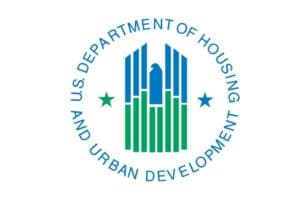Subscribers Only

Senate Appropriations Approves FY 2014 302(b) Spending Allocations
The Senate Appropriations Committee recently approved the FY 2014 spending allocations, also known as 302(b)s, for its 12 subcommittees , including the Transportation-HUD (T-HUD) and Agriculture-Rural Development Subcommittees. The Senate Budget Committee had set the overall FY 2014 discretionary spending cap, known as the 302(a), at $1.058 trillion, which is equal to the President’s FY 2014 budget request.

House Ways and Means Committee Holds Hearing on Residential Real Estate Tax Provisions
The House Ways & Means Committee recently held a hearing on federal tax provisions that affect residential real estate, including the low-income housing tax credit (LIHTC).

NH&RA 2013 Annual Meeting and Senior Housing Symposium Conference Materials Now Available
NH&RA was thrilled to welcome over 250 participants to the Loews Miami Beach Hotel in South Beach for our 2013 Annual Meeting. All conference materials, Power Point presentations, relevant articles, reports, memos, etc. are available below under the relevant session titles.

Interior Secretary Salazar Announces Historic Credit Action Items
Secretary of the Interior Ken Salazar recently announced the results of a National Park Service review of the historic tax credit. Overall, the document is very encouraging and addresses many of the issues NH&RA highlighted in recent comments to DOI.

Fiscal Cliff Legislation Extends 9% LIHTC, NMTC and Other Credits
After months of stalemate on December 31 (US Senate) and January 1 (US House of Representatives) respectively, has passed HR 8, The American Taxpayer Relief Act, which addresses the tax provisions of the “fiscal cliff.” The legislation is expected to be signed into law by President Obama imminently. The legislation includes a number of tax extenders including extensions of most of the expiring “Bush-era” income tax rates, a permanent “patch” for the alternative minimum tax, and most notably for NH&RA members extensions of the New Markets Tax Credit and the fixed 9 percent rate for the Low-Income Housing Tax Credit through 2013. The measure also postpones sequestration, automatic spending cuts to government spending that was set to occur in January, by two months to allow time for further negotiation.

OMB Issues Report to Congress Detailing Sequestration Effects on Programs
The Office of Management and Budget (OMB) recently released a letter to Congressional leaders which detailed the calculations of the amounts and percentages by which various budgetary resources are required to be reduced due to sequestration, or the automatic $85 billion worth of across-the-board spending cuts in fiscal year (FY) 2013

UPDATE: House Approves FY 2013 T-HUD Budget
On June 29, the U.S. House of Representatives approved its fiscal year (FY) 2013 appropriations bill (HR. 5972) for the U.S. Departments of Transportation and Housing and Urban Development, or T-HUD. The approved bill funds HUD programs at around $33.6 billion, which is about $1.36 billion (3.9 percent) below the Senate Appropriations Committee proposed FY 2013 amount, $1.75 billion (4.9 percent) below the President’s FY 2013 request, and $3.8 billion (10.2 percent) below the FY 2012 enacted level. The FY 2013 appropriations bill (HR. 5973) for the U.S. Department of Agriculture including rural housing programs administered by Rural Development is expected to be considered by the full House within the next week. The Senate Appropriations Committee approved its version of both bills (S. 2322, S. 2375) in April but the full Senate has not yet scheduled floor consideration of the bill.

White House RPWG Reports on Rental Alignment Initiative Progress
The White House Domestic Policy Council’s Rental Policy Working Group (RPWG) recently held a conference to discuss progress of its ongoing rental policy alignment activities, including the various pilot programs underway and next steps for other alignment projects.

Recommended Practices for Determining Demand
The National Council of Housing Market Analysts (NCHMA) has separate definitions of overall market demand and project specific demand Market demand is the total number of households in a defined market area that would potentially move into any new or renovated housing units. Market demand is not project specific and covers all renter households and income levels. Components of demand vary and can include household growth; turnover, substandard dwelling units, rent over-burdened households, and demolished housing units.

Best Practices For Rural Market Studies (DRAFT)
Several important differences between rural and urban market studies include market area definitions, evaluation of comparables, and consideration of demand. On the surface, it seems like defining a rural market area might be purely a matter of opinion, but well-established analytic tools are available to assist market analysts. Evaluating comparables, understanding how the proposal would fit into the market, and understanding what the demand calculations really mean are more a matter of experience.

White Paper: Determining Market Area
The definition of a market area sets the context and tone of the entire market study. While a somewhat subjective judgment, a market area’s size and density has a profound impact on an analysis in terms of understanding demographic trends, demand estimates and the competitive environment.

Selecting Comparable Properties
Comparable properties are used for several purposes within a market study. They are used to help evaluate the market, they are used to evaluate the subject’s position within a market, and they are used to determine market rents. The more similar the comparable properties are to the proposed property, the more reliable the conclusions that may be drawn. The purpose of this paper is to investigate the concepts involved in selecting comparable properties, and to identify some of the ways comparable properties are used in a study.